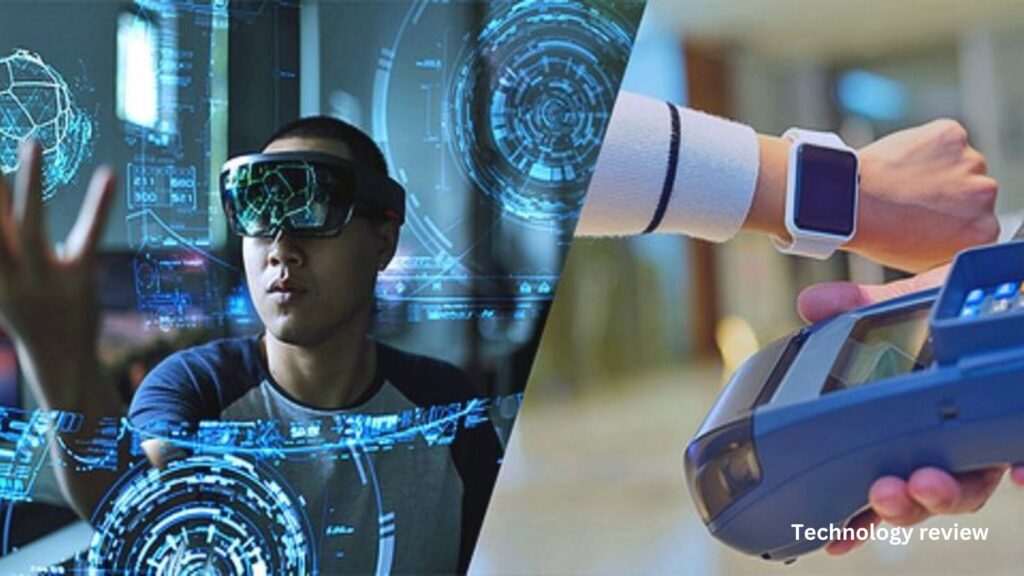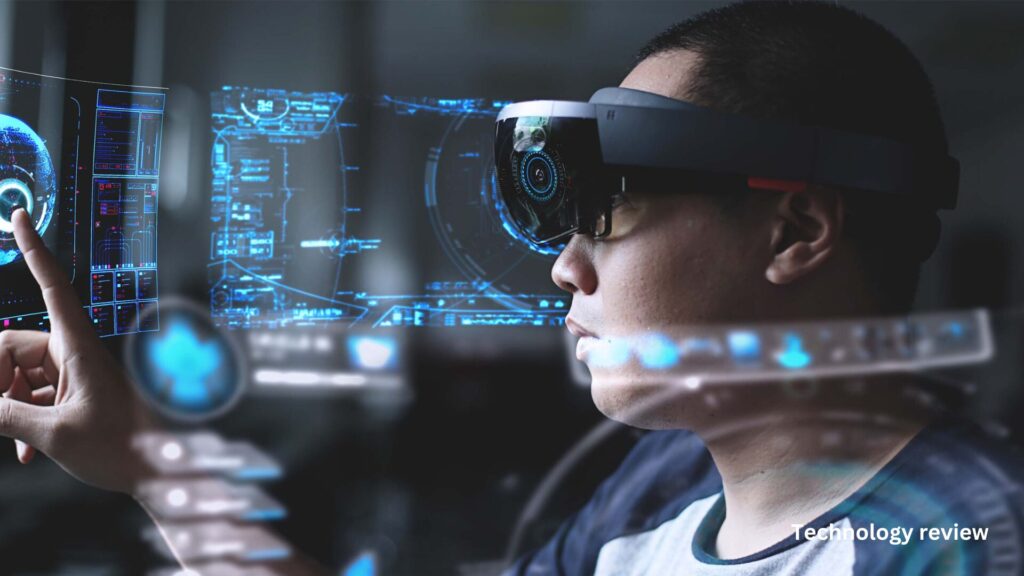In recent years, the landscape of technology has dramatically transformed with the advent of wearable computers. Wearable Technology, once a staple of science fiction, is now a tangible reality, reshaping how we interact with the digital world. From smartwatches to fitness trackers, these devices seamlessly integrate into our daily lives, offering convenience and connectivity like never before. In this blog post, we’ll delve into the world of wearable computers, exploring their components, popular devices, benefits, challenges, and what the future holds for this fascinating technology.
What Are Wearable Computers?
Wearable computers are electronic devices designed to be worn on the body, either as an accessory or integrated into clothing. Unlike traditional desktop or laptop computers, these devices are created to perform computing tasks while remaining unobtrusive and comfortable for the user. Their primary aim is to offer real-time data and connectivity, often leveraging wireless technologies like Bluetooth and Wi-Fi to communicate with other devices or networks. This allows users to access information and perform tasks seamlessly, without needing to disrupt their daily activities.
Typically, wearable computers are equipped with sensors that gather various types of data, from health metrics like heart rate and steps taken to environmental factors such as temperature and humidity. They also feature small yet powerful processors that can handle complex computations and manage multiple tasks on the go. Displays on wearable computers, although compact, are designed to be intuitive and provide essential information at a glance. Some advanced wearables even utilize augmented reality (AR) to overlay digital information onto the real world.
Connectivity is another crucial aspect of wearable computers. They often sync with smartphones, cloud services, or other smart devices, facilitating the exchange of data and enabling remote access. Battery life is a critical consideration; thus, efficient power management systems are integrated to ensure these devices can operate throughout the day with minimal recharging.
The versatility and functionality of wearable computers make them invaluable tools in various applications, from personal health and fitness monitoring to professional productivity and safety. As they continue to evolve, wearable computers are expected to become even more integrated into our daily lives, offering new ways to interact with the digital world.
Key Components of Wearable Computers
Wearable computers comprise several key components that enable their functionality and versatility. These include:
1. **Sensors**: Sensors track various metrics such as heart rate, steps taken, body temperature, and more, providing valuable health and fitness insights.
2. **Processors**: Small yet powerful processors perform computations and manage tasks on the go, ensuring wearable computers handle complex functions without sacrificing performance.
3. **Connectivity Modules**: Connectivity modules like Bluetooth, Wi-Fi, and sometimes cellular technology facilitate communication with smartphones, cloud services, or other devices, enabling seamless data exchange and remote access.
4. **Displays**: Small displays allow users to interact with the device, view notifications, or control settings. Some wearables use innovative display technologies like augmented reality (AR) to project information onto the real world.
5. **Power Sources**: Efficient power management and rechargeable batteries ensure that wearable computers can function throughout the day without frequent recharging.

Popular Wearable Computer Devices
The market for wearable computers is diverse, with a variety of devices catering to different needs and preferences. Some of the most popular types include:
1. **Smartwatches**: Combining the functionality of a traditional watch with advanced computing capabilities, smartwatches offer features like notifications, fitness tracking, and mobile apps. Brands like Apple, Samsung, and Garmin dominate this space.
2. **Fitness Trackers**: These devices focus on health and fitness metrics, helping users monitor their physical activity, sleep patterns, and overall wellness. Fitbit and Xiaomi are well-known names in this category.
3. **Smart Glasses**: Once considered futuristic, smart glasses are now becoming mainstream. Devices like Google Glass and Microsoft HoloLens offer augmented reality experiences and hands-free information access.
4. **Wearable Cameras**: Ideal for capturing hands-free photos and videos, wearable cameras like GoPro provide unique perspectives for activities such as sports and travel.
5. **Wearable Health Monitors**: These devices, often used in healthcare settings, track vital signs and other health metrics to aid in patient monitoring and diagnosis.

Benefits of Wearable Computers
Wearable computers offer numerous advantages that enhance both personal and professional life. These benefits include:
**Convenience**: Wearable computers provide instant access to information, allowing users to check messages, track health metrics, or get navigation directions without reaching for their phones. This hands-free accessibility streamlines daily tasks and interactions with digital services.
**Health Monitoring**: Advanced sensors in wearables track various health metrics in real-time, such as heart rate, sleep patterns, and activity levels. This empowers users to make informed decisions about their health and lifestyle, potentially improving overall well-being and preventing medical issues.
**Increased Productivity**: By integrating technology into daily routines, wearable computers can boost productivity. They offer hands-free access to tools and information, making tasks more efficient. For professionals, this means being able to manage schedules, set reminders, and access work-related data on the go.
**Enhanced Safety**: Wearables like smart helmets or safety vests provide real-time alerts and information in hazardous environments. This can significantly improve safety for workers in industries such as construction, manufacturing, and emergency services by alerting them to potential dangers or providing vital information promptly.
**Personalization**: Many wearables come with customizable features, allowing users to tailor their experience to fit their personal preferences and needs. This includes adjustable settings for notifications, display options, and tracking metrics, ensuring the device meets the unique requirements of each user.
**Seamless Integration**: Wearable computers often sync with other smart devices, creating a cohesive and connected ecosystem. This enables smooth data exchange and remote access, enhancing the overall user experience by integrating multiple facets of technology into a single, user-friendly platform.
**Motivation and Goal Tracking**: For fitness enthusiasts and individuals focused on self-improvement, wearables offer goal-setting and tracking features. These can motivate users to stay active, achieve fitness milestones, and maintain a healthier lifestyle by providing progress reports and reminders.
In essence, wearable computers bring a new level of interaction and functionality to our lives, making everyday tasks more manageable and helping us stay connected, productive, and healthy.
Challenges and Limitations
Wearable computers, despite their many advantages, encounter several challenges and limitations:
Privacy remains a significant issue due to the constant collection and transmission of personal data. Ensuring that data is securely stored and transmitted is crucial to protecting user privacy. Battery life also poses a challenge; as wearables become more advanced and capable of performing complex functions, maintaining long-lasting battery life without frequent recharging becomes increasingly difficult.
Designing intuitive user interfaces for small displays can be problematic, impacting the overall user experience. Creating a balance between functionality and ease of use on such compact devices is not straightforward. Cost is another barrier; high-end wearable computers can be expensive, which may limit their accessibility to a wider audience. Exploring the Future: Wearable Computers.
Moreover, wearable computers often have limited functionality compared to larger computing devices. This restriction means they can only perform specific tasks, which may not be sufficient for all users. Addressing these challenges is essential for the continued growth and adoption of wearable technology.
The Future of Wearable Technology
The future of wearable technology is set to usher in a new era of innovation and convenience, with advancements poised to enhance their capabilities and broaden their applications. One significant development on the horizon is the integration of 5G networks, which promises to deliver faster and more reliable connectivity. This leap in network technology will enable wearable computers to handle more data-intensive tasks, improving real-time responsiveness and overall user experience.
Health monitoring features are also expected to see substantial improvements. Future wearables could offer more comprehensive and precise health diagnostics, including continuous monitoring of vital signs and early detection of potential medical conditions. This advancement holds the potential to transform healthcare by enabling remote patient monitoring and providing doctors with real-time data, ultimately leading to better patient outcomes. Exploring the Future: Wearable Computers.
Another anticipated trend is the increased integration of wearable technology with other smart devices and Internet of Things (IoT) ecosystems. This will create a more seamless and interconnected user experience, where wearable computers can communicate effortlessly with home automation systems, smart appliances, and even vehicles, enhancing everyday convenience and efficiency.
Design innovation is likely to make wearables more appealing to a wider audience. Expect to see more fashion-forward and discreet designs that blend seamlessly with everyday attire, making wearable computers less conspicuous and more versatile. Advances in materials and manufacturing techniques will allow for thinner, lighter, and more comfortable devices that do not compromise on functionality.
Artificial intelligence (AI) will play a crucial role in the evolution of wearable technology. AI-powered wearables will offer more personalized and predictive insights, adapting to individual user behaviors and preferences. This could include intelligent fitness coaching, personalized health recommendations, and more efficient management of daily tasks. Enhanced AI capabilities will make wearable computers smarter and more intuitive, significantly boosting user satisfaction. Exploring the Future: Wearable Computers.
The field of augmented reality (AR) is also set to expand within the realm of wearable technology. Future devices may incorporate more sophisticated AR features, allowing users to interact with digital information overlaid onto the physical world in increasingly immersive ways. This could revolutionize industries such as education, gaming, and professional training by providing interactive and hands-free learning experiences.
In summary, the future of wearable technology is brimming with possibilities, driven by advancements in connectivity, health monitoring, integration, design, AI, and AR. These innovations promise to redefine how we interact with technology, making our lives more connected, productive, and enjoyable.

